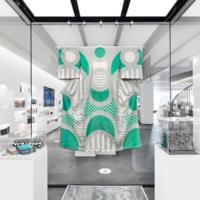The Supreme Court ruled Wednesday that residents near Odakyu Electric Railway Co. elevated train tracks in Tokyo qualify as plaintiffs in a lawsuit demanding the revocation of permits for the section.
It was the first decision by the top court's Grand Bench determining who qualifies as plaintiffs since the revised administrative lawsuits law, which includes provisions for such action, took effect in April.
The decision differs from a 1999 ruling by the Supreme Court's No. 1 Petty Bench, which says only landowners in the area can be plaintiffs.
Wednesday's decision may pave the way for an increase in administrative lawsuits, legal experts said.
In the past, the courts have been reluctant to allow residents who do not have direct rights over land that has been claimed for infrastructure work to be plaintiffs and have often dismissed their lawsuits.
The Odakyu case will now be sent to the Supreme Court's No. 1 Petty Bench for a ruling on the plaintiffs' request to revoke the government permits for the tracks' construction.
"Those living inside the district (near the construction site) may suffer direct effects to their health and living environment from the noise and vibration stemming from the project," presiding Justice Akira Machida said.
The suit in question was originally filed by about 40 residents of Tokyo's Setagaya Ward, who claimed the section that would affect them should be built underground. They claimed their proposal was better for the environment and cost-effective.
The Tokyo District Court ruled in favor of the residents in October 2001, agreeing there would be a problem of noise from the construction as well as train operations, but the Tokyo High Court reversed the ruling in December 2003.


















With your current subscription plan you can comment on stories. However, before writing your first comment, please create a display name in the Profile section of your subscriber account page.